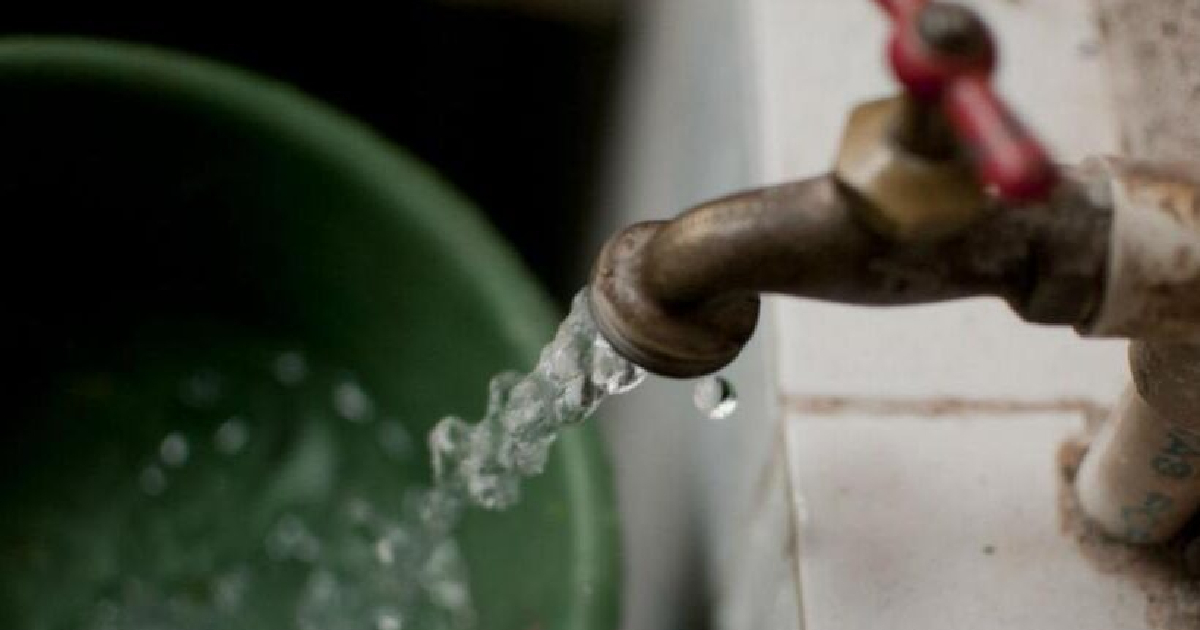
The residents of Leonor Street between Carvajal and Lindero, in the Cerro municipality, in Havana, reported that during the last six months the drinking water received in their homes presentshigh chlorine levels.
Breathing difficulties, swelling in the feet and property damage are the main problems that residents face daily, the site reportedMartí News.
In the midst of the currentcuban crisis, where wages are not enough to meet basic needs, one affected person expressed concern that excess chlorine is damaging clothes every time they wash.
Made explained that, due to this situation,a short that was originally brown ended up taking on a pinkish tone.
Geise, another affected neighbor, expressed her frustration at having to let the water sit in a tank before she could use it, waiting for the chlorine to settle.
That was the advice given to him by an employee of the state company Aguas de La Habana, after numerous people reported the problem.
The inspector, after taking water samples, said that It was not safe to consume it like that., denounced the angry neighbor.
Another resident, speaking anonymously, warned that some people experiencebreathing problems and swelling in the legs, especially those who have diseases that make them more susceptible to chlorine.
A doctor consulted byCyberCubapointed out that those who sufferbronchial allergy, asthma, dermatitis, chronic obstructive pulmonary disease, and othersinflammatory conditions, they should not be exposed to water with high concentrations of chlorine.
Some of these diseases are quitecommon in the Cuban population, the doctor warned.
TheUnited States Agency for Toxic Substances and Disease Registry (ATSDR) warns that low levels of chlorine can cause irritation of the nose, throat and eyes, however exposure to high concentrations can cause coughing, respiratory rhythm disturbances and even damage the lungs.
The US health agency also warns that drinking small amounts of hypochlorite solutions (less than a cup) can cause irritation of the esophagus; while ingesting concentrated solutions of hypochlorite causes serious damage to the upper part of the digestive tract and, in some cases, even death.
And while the excess of chlorine in drinking water harms the residents of Leonor Street, in El Cerro, in another part of the Havana municipality,a huge pothole turned into a swimming pool.
However, in the city of Trinidad, one of the territories affected by thedroughtin the province of Sancti SpíritusThe precious liquid reaches homes with difficulty due to the corruption of the regime.
Citizens reported irregularities in the management of the resource ranging from key chains that manipulate the valves at their convenience, to pipes that do not reach their destination and are sold for 3,000 or 5,000 pesos.
Recently, Eng. Alexis Acosta Cruz, vice president of the OSDE Water and Sanitation, admitted that in Cubaonly half of the population receives the service in a stable and safe way.
In statements made at the Round Table, the official explained that in the country there are 2,600 places with aqueduct systems, more than 3,000 pumping stations and more than 24,000 kilometers of networks and aqueducts that benefit more than 8.8 million people.
However, of this totalonly 48 percent have a supply system with quality, accessibility and availability indicators that guarantee safe management.
What do you think?
COMMENTFiled in: